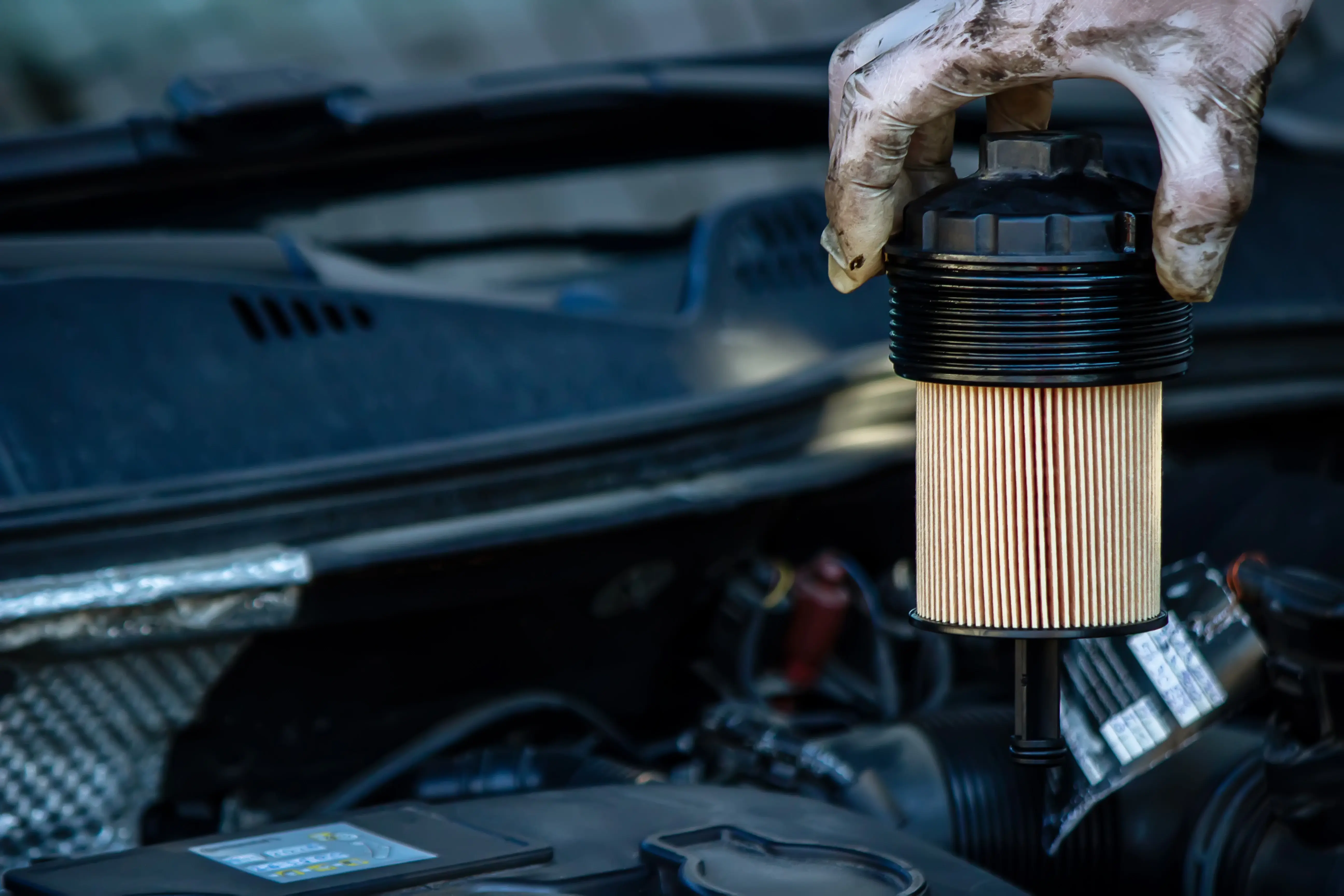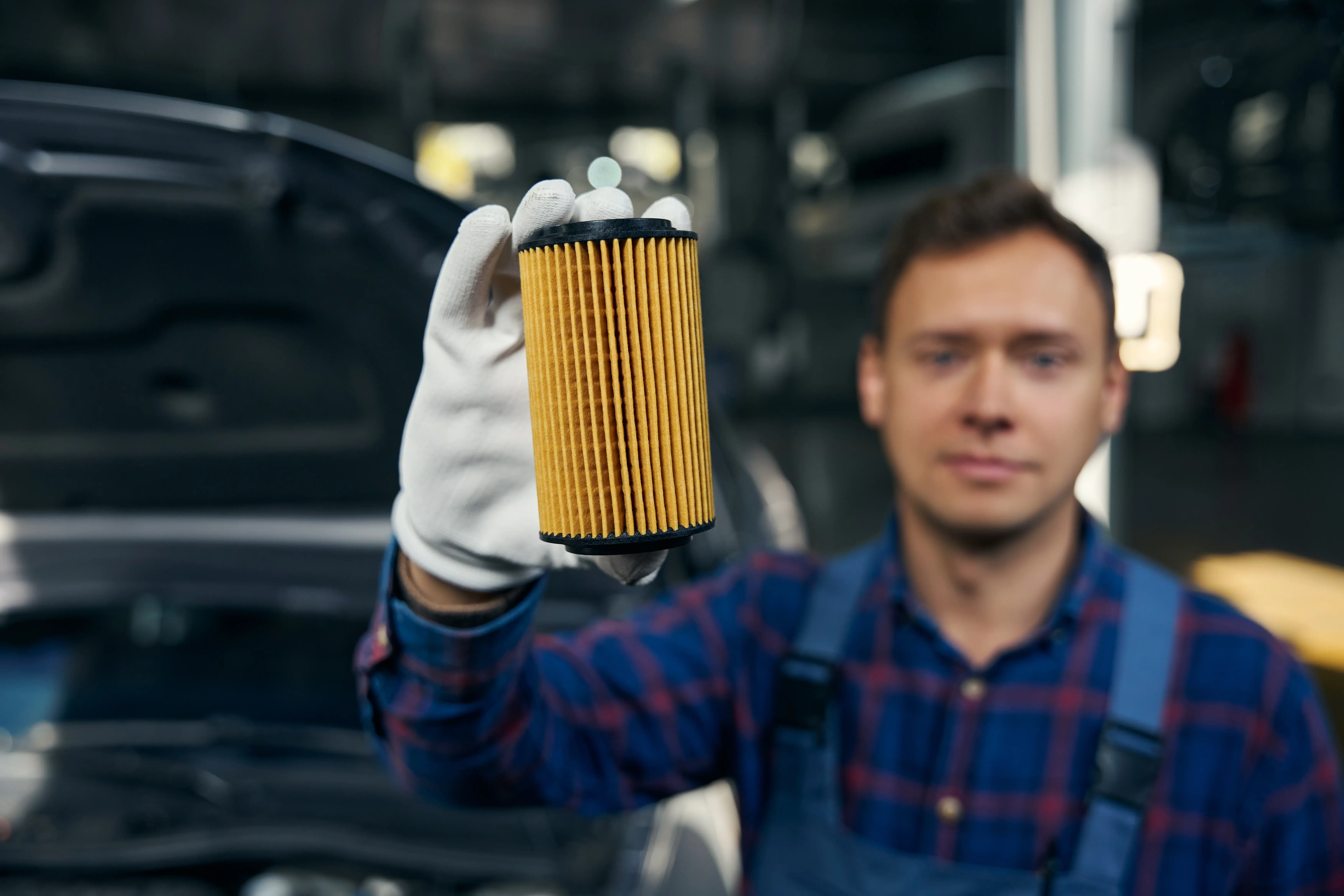You rely on quality auto oil filters to protect your engine and extend its life; at Aloha Auto Repair you’ll learn how correct oil filter replacement, selection, and maintenance impact performance, fuel economy, and longevity. This guide gives clear, technician-backed advice so you can identify recommended types, service intervals, and signs that your filter needs attention, empowering you to make informed choices for your vehicle’s health.
Key Takeaways:
- Using the right auto oil filters protects the engine by trapping dirt, metal particles, and sludge to keep oil clean and flowing.
- Signs you need oil filter replacement: dirty oil, low oil pressure warning, unusual engine noise, or reduced fuel economy.
- Maintenance tips: follow manufacturer intervals for oil filter replacement, use the correct filter model and quality, and recycle used filters properly.

The Essential Role of Oil Filters in Vehicle Health
You rely on auto oil filters to trap abrasive particles, soot, and combustion byproducts that would otherwise score bearings and shorten engine life; typical passenger-car filters capture the majority of particles 20–40 microns and larger with 90–99% efficiency. At Aloha Auto Repair we pair oil filter replacement with proper oil selection so your engine maintains pressure and cooling; failure to replace filters on a 5,000–7,500 mile interval (or up to 15,000 miles with some synthetics) invites accelerated wear and costly repairs.
Mechanism of Filtration: How Oil Filters Work
Filtration media—pleated cellulose, synthetic, or blended fibers—physically intercept contaminants while bypass valves protect flow under clogging; anti-drainback valves keep oil in the filter after shutdown to prevent dry starts. You should note micron ratings and beta ratios when choosing filters: a beta ratio of 200 at 20 microns means the filter removes 99.5% of particles ≥20 µm. Proper seal torque and correct filter type ensure consistent flow and filtration performance.
Impact of Oil Quality on Engine Longevity
Oil viscosity, additive package, and TBN determine how well oil cushions moving parts and neutralizes acids: new engine oils commonly show TBN ~8–12, and protection declines as TBN approaches 3. Low-quality oil or excessive contamination raises wear rates, increases sludge formation, and shortens service life; you’ll get longer intervals and less wear using manufacturer-grade synthetic oils (0W‑20, 5W‑30) paired with timely oil filter replacement.
Contaminants like ferrous wear particles, soot, fuel dilution, and water accelerate fatigue and bearing wear by abrading surfaces and thinning lubricant films; oil viscosity loss at high temperature reduces hydrodynamic film thickness, increasing metal‑to‑metal contact. For fleets or high-mileage vehicles you can use periodic oil analysis (measuring metals, soot, and TBN) to tailor drain intervals; at home, inspect oil color and level each service and always replace the filter with every oil change to protect tolerances and maximize engine life.
The Battle Against Contaminants: Understanding Oil Filter Materials — Aloha Auto Repair
Comparing Different Filter Media: Paper, Synthetic, and Metal
With auto oil filters, paper media is low-cost and typically captures particles around 20–30 µm, making it suitable for routine city driving and frequent oil filter replacement; synthetic media captures down to 5–10 µm, boosts dirt-holding capacity, and can extend service intervals to 7,500–15,000 miles depending on oil; metal (wire mesh) is reusable, handles high flow, and is favored in heavy-duty or racing applications where coarse debris removal and durability matter.
Filter Media Comparison
| Paper | Low cost; ~20–30 µm capture; ideal for 3,000–7,500 mile intervals; clogs faster in dusty environments. |
| Synthetic | High-efficiency; ~5–10 µm capture; higher dirt-holding capacity; supports 7,500–15,000 mile oil filter replacement with compatible oil. |
| Metal (Wire Mesh) | Reusable; ~30–50 µm nominal; best for high-flow diesel or performance use; less fine filtration but robust under abuse. |
The Role of Bypass Valves in Filter Performance
A bypass valve opens when differential pressure across the element reaches roughly 5–10 psi or during cold starts when oil viscosity spikes, routing oil around the media so the pump keeps supplying oil; you will see bypass action during severe clogging or heavy towing, and while it prevents oil starvation it also allows unfiltered oil to circulate, making timely oil filter replacement imperative to limit wear.
Most bypass valves are spring-loaded inside the canister and reset once flow normalizes; failure modes include sticking open from sludge, corroded springs, or clog-induced pressure that forces prolonged bypassing. You should watch for signs like sudden pressure drops, metallic debris on magnetic plugs, or abnormal bearing wear. Technicians at Aloha Auto Repair can test valve response during inspections and recommend filters with reliable bypass settings based on your driving and service interval.
Maintenance Matters: Best Practices for Auto Oil Filters — Aloha Auto Repair
Follow scheduled oil and filter changes based on your vehicle and driving conditions: many modern cars with synthetic oil go 7,500–10,000 miles between services, while severe use—towing, stop-and-go, dusty environments—drops that to 3,000–5,000 miles. You should pair every oil change with oil filter replacement to protect bearings and preserve fuel economy; technicians at Aloha Auto Repair use OEM or high-efficiency spin-on filters that trap particles down to about 20 microns.
Recommended Service Intervals: When to Replace Your Oil Filter
Check your owner’s manual and adjust for usage: synthetic-oil vehicles typically need oil filter replacement every 7,500–10,000 miles, conventional-oil cars around 3,000–5,000 miles. Severe-service patterns—short trips, frequent idling, hauling or dusty roads—warrant cutting intervals in half. Aloha Auto Repair logs mileage and service dates so you can schedule proactive filter changes and avoid pressure drops or bypass valve activation that let contaminants circulate.
Signs of a Failing Filter: Recognizing Warning Signs Before It’s Too Late
Look for oil-pressure warnings, metallic ticking or knocking, dark gritty oil on the dipstick, sudden drops in fuel economy, or engine overheating after extended drives; clogged filters can trigger those symptoms within 3,000–7,500 miles depending on conditions. Visible metal flakes in the drain pan or black smoke at startup also indicate compromised filtration. If you see any of these, arrange oil filter replacement at Aloha Auto Repair within 24–48 hours to limit wear.
Clogging forces the filter’s bypass valve to open, allowing unfiltered oil and abrasive particles into bearings and camshafts; high-efficiency filters stop particles around 20–30 microns, while low-grade units may only capture 60–100 microns. You can check service records, inspect oil consistency on the dipstick, or have Aloha Auto Repair run an oil analysis that measures wear metals to confirm whether oil filter replacement is overdue.
A Look Into the Future: Innovations Shaping Auto Oil Filters
Emerging Trends in Filtration Technology
Nanofiber media, multi-stage depth cartridges and embedded sensor arrays are redefining how you approach oil filter replacement. Advanced media now capture particles down to 3–5 microns with >90% single-pass efficiency, allowing many OEMs to extend service intervals to 10,000–15,000 miles. You gain reduced engine wear, lower lifecycle costs, and real-time diagnostics when sensors detect saturation or bypass events, improving maintenance decisions at Aloha Auto Repair.
- Nanofiber and synthetic media: higher efficiency at smaller particle sizes.
- Smart filters: onboard pressure/contamination sensors for predictive service.
- Modular cartridge designs: easier recycling and lower scrap volume.
- Extended-life systems: compatibility with long-interval synthetic oils (10k–15k miles).
Emerging Trends — Key Benefits
| Trend | Benefit for you |
| Nanofiber media | Better particle capture → less engine wear |
| Smart sensors | Predictive oil filter replacement and reduced downtime |
| Modular cartridges | Easier disposal/recycling and lower service waste |
The Environmental Impact of Advanced Filter Designs
Recyclable housings, low-retention media and biodegradable fibers reduce waste streams while preserving filtration performance. You can cut used-oil generation by roughly 50% when extended-life filters let you double intervals from 5,000 to 10,000 miles, lowering disposal volume and hazardous-waste handling. OEM take-back programs and cartridge recycling are gaining traction, changing how you source and dispose of auto oil filters at your shop.
For a practical example, a 100-vehicle fleet that skips one oil change per vehicle annually (one 4-quart change saved) avoids about 100 gallons of used oil per year, trimming recycling logistics and costs. Lifecycle assessments indicate material recycling plus fewer oil changes can reduce overall vehicle maintenance emissions by meaningful percentages; you should integrate recycling and long-life filter options into service plans to realize both cost and environmental gains.
- Reduced used-oil volume: fewer changes = less hazardous waste to process.
- Recyclable housings: lower landfill impact and material recovery opportunities.
- Biodegradable media options: decreased persistent micro-waste in filters.
Environmental Design Considerations
| Design | Environmental impact |
| Low oil-retention elements | Less waste oil per filter → lower disposal costs |
| Recyclable metal/plastic cans | Material recovery and reduced landfill volume |
| Biodegradable or natural-fiber media | Reduced long-term environmental persistence |
Real-World Implications: The Cost of Neglecting Auto Oil Filters — Aloha Auto Repair Insights
Neglecting auto oil filters accelerates wear and can turn a routine oil filter replacement into a major repair bill: a clogged filter can starve the pump and lead to engine failure costing $3,000–$7,000, while a proper filter and service typically runs $15–$75. You face shorter engine life, degraded fuel economy, and potential warranty issues if you exceed manufacturer intervals (commonly 3,000–10,000 miles) without changing the filter.
Common Misconceptions About Oil Filter Maintenance
Many drivers assume premium filters aren’t worth the cost or that oil and filter changes can be pushed well past recommended miles. You should know that contaminants accumulate quickly under heavy loads or frequent short trips, and skipping oil filter replacement increases abrasive particles in your engine oil, raising repair risk and potentially voiding warranties tied to maintenance schedules.
Case Studies: Consequences of Ignoring Filter Replacements
Aloha Auto Repair has tracked multiple instances where skipped filter service led directly to mechanical failure: examples include sudden oil pressure loss, bearing damage, and turbocharger failures, with repair bills ranging from $2,400 to $6,500 and vehicle downtime measured in days rather than hours.
- Case 1 — 2012 Toyota Camry: Filter not changed for 18,000 miles; symptoms: low oil pressure and knocking; diagnosis: rod bearing wear; repair cost $4,200; downtime 5 days.
- Case 2 — 2016 Ford F-150 (work truck): Heavy towing, filter skipped 12,000 miles; clogged pickup screen and oil pump damage; repair cost $3,800; lost revenue estimated $1,800 (3 days off the road).
- Case 3 — 2018 Honda Civic: Urban stop-and-go, filter replaced only at oil change every 10,000 miles; contaminated oil caused catalytic converter fouling; combined repair $2,500; diagnostic time 2 days.
- Case 4 — 2010 Dodge Ram Diesel: Filter bypassed due to deferred service, metal particles contaminated injectors; fuel system and injector bank replacement $6,500; tow fee $250; downtime 7 days.
Patterns in these incidents show you pay little now or much more later: routine oil filter replacement averaging $20–$60 contrasts with average repair costs above $3,500 in our tracked failures, and vehicles serviced on schedule returned to service within hours rather than days.
- Fleet Study — 20 delivery vans over 24 months: vehicles adhering to 7,500-mile filter changes had 1 failure; those extending to 15,000 miles had 7 failures; additional repair costs $42,600 across the fleet.
- Particle Count Test — Sample engine oil: after 8,000 miles without filter change, particulate count rose by 320% versus baseline; correlated with 18% drop in oil film integrity in lab analysis.
- Owner Survey — 150 Aloha Auto Repair customers who skipped filter service: 28% reported abnormal noises within 6 months; average subsequent repair $2,900; median downtime 4 days.
- Cost-Benefit Example — Spending $40 for an oil filter replacement at 7,500 miles saved an estimated $3,600 in avoided repairs for one fleet vehicle over three years, a 90x return on preventive maintenance.
Summing up — Aloha Auto Repair on auto oil filters

To wrap up, as a customer of Aloha Auto Repair you should keep your auto oil filters in top condition through scheduled oil filter replacement and inspections so your engine runs cleaner, lasts longer, and maintains peak performance; rely on qualified technicians to use the right filter and intervals for your vehicle.
FAQ
Q: What do auto oil filters do and why are they important?
A: Auto oil filters trap metal particles, soot, and other contaminants from circulating engine oil to protect bearings, camshafts, and other components. Clean oil extends engine life, improves lubrication, and helps maintain oil pressure.
Q: How often should I get an oil filter replacement?
A: Interval depends on your vehicle, driving habits, and oil type—typical ranges are 3,000–10,000 miles. Synthetic oil and long-life filters often allow longer intervals; consult your owner’s manual for the manufacturer recommendation.
Q: Can I change an auto oil filter myself, and what are the key steps?
A: Yes, many owners can perform oil filter replacement with basic tools: warm up the engine, drain the oil, remove the old filter, lightly oil the new gasket, install the new filter by hand (don’t overtighten), refill with the correct oil, and check for leaks and proper oil level.
Q: What types of auto oil filters are available and how do I choose one?
A: Common types include spin-on, cartridge, and high-efficiency media filters; differences lie in construction, filtration media, bypass valves, and micron ratings. Choose a filter that matches your vehicle’s make and model, meets or exceeds OEM specifications, and balances dirt-holding capacity with flow characteristics.
Q: What are signs a filter is clogged or failing and what happens if I delay replacement?
A: Signs include reduced oil pressure, metal noise from the engine, oil leaks around the filter, or dark, gritty oil on inspection. Many filters have bypass valves that open when clogged, which allows unfiltered oil to circulate—protecting flow but increasing wear.
Keep your engine running smoothly with Aloha Auto Repair’s quick guide to auto oil filters. Learn how the right filter protects your car and boosts performance. Schedule your service today and let our experts keep your ride in top shape!
Also read:
Auto Maintenance: Keeping Your Vehicle in Top Shape
Your Trusted Auto Preventive Maintenance Checklist for Stress-Free Driving
Aloha Auto Repair’s Emergency Car Repair Solutions: Survive Any Roadside Crisis






